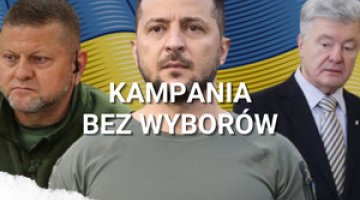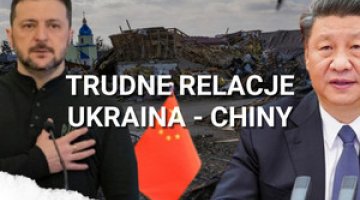Russia’s war against Ukraine: the status after three days
At the beginning of the operation’s fourth day, reconnaissance units from the Russian group operating in north-eastern Ukraine approached the borders of Kyiv for the first time. The city is encircled on the west, north and east sides. The aggressor’s troops operating out of Belarusian territory have reached the northern and western outskirts of Kyiv directly, while the grouping on right-bank Ukraine has developed at around 60–150 km from the city centre. On Sunday morning, Russian sabotage and reconnaissance groups carried out their first attacks on Kyiv’s left bank (Troyeshchyna). Russian forces continued their push towards Boryspil International Airport.
The units of the Russian special forces and the Russian Airborne Forces, which have been operating in the vicinity of the Ukrainian capital for two days, have been reinforced by sub-units of the Eastern Military District moving in from Belarus. The bridges north of Kyiv (on the Terek and Desna rivers), which retreating Ukrainian troops had destroyed during the previous 24 hours, have been replaced by Russian engineering units with makeshift crossings. In the course of the fighting in the north-eastern direction, the Russian army has bypassed and blocked off the remaining Ukrainian garrisons, led by Chernihiv. Ukrainian forces are withdrawing towards Kyiv, to be tasked with strengthening its defence. As part of the operation to encircle the capital, Russian forces have begun active operations in the northern part of the Zhytomyr oblast and attacked Korosten.
In the remaining areas of activity, positional fights are being carried out for the main urban centres, which the Ukrainians are stubbornly defending. The Russians broke the defence ring around Kharkiv and Russian reconnaissance groups in light armoured vehicles (probably the SpetsNaz GRU) entered the city, but after a short fight they were ousted. Fighting is also going on for Sumy, Mariupol (the city has been encircled from all directions), Mykolaiv and Odesa (Ukrainian forces are repelling successive sea landings). After the aggressor’s forces took control of the left-bank part of the Kakhiv Reservoir (Russian forces had approached the town of Enerhodar), the situation on this section of the front stabilised.
The following night, Russia carried out air and missile strikes, as well as artillery and sabotage attacks on targets throughout Ukraine. Fuel depots in Vasylkiv and the gas pipeline in Kharkiv have been destroyed, among other objects. A Russian rocket fell on the shielding of a radioactive waste depot in Kyiv. For the first time, the activities of sabotage and reconnaissance groups spread out over a larger area of right-bank Ukraine (in the Cherkassy oblast). Strategic aviation operating from over Belarusian territory was also used for the first time; this included a Tu-22M3 bomber, one of the missiles launched from which was shot down. According to some sources, subunits of the Armed Forces of Belarus will participate directly in the attack as part of the composition of the Russian groups.
On 26 February, President Zelenskiy announced that Ukraine had repulsed the attack on the capital, which thwarted the plans for a coup d’état. According to the Ukrainian side, despite the attempts to take over the capital, the Russian army has made no progress over the last two days: the battles with the occupying forces are taking place in the same places as at the beginning of the conflict. Prime Minister Denys Shmyhal announced that the defence was continuing along the entire front line; he said that Ukrainian forces were “destroying the occupiers by land, sea and air”, and the country was just “rising” to resist the enemy. According to Ukrainian reports, the Russian losses are estimated at 150 tanks, 706 armoured vehicles, 27 aircraft, 26 helicopters and around 4300 troops. Ukrainian media have broadcast recordings and photos of the attackers’ defeated forces.
Zelenskiy has rejected an offer to participate in peace talks in Minsk, arguing that Belarus ceased to be a neutral state when it opened its territory to Russian troops. Instead, he proposed the possibility of conducting negotiations elsewhere, but without the condition that Ukraine would lay down its arms. The Ukrainian optimism in military matters has been accompanied by enthusiasm sparked by the West’s decision to exclude Russia from the SWIFT system. The president called on Ukrainians abroad to return to their country and defend their homeland. He also appealed to “the friends of Ukraine” for help in the fight against the occupier: he also announced the creation of a special international legion within the territorial defence forces. He also appealed once more to the Russian people to put pressure on the Kremlin to stop the war. He further appealed to the Belarusian people, calling on them to oppose the authorities in Minsk who had allowed the aggression to be launched against Ukraine from Belarusian territory. The Ukrainian Defence Ministry has launched a hotline to provide data on fallen Russian soldiers and prisoners. This is another element of Ukraine’s information policy which is intended to influence the public mood in Russia.
On the third day of aggression, the number of civilians leaving for the west of Ukraine and Poland rose dramatically. According to data from the Republic of Poland’s Border Guard, a total of 156,000 people have entered Poland since the commencement of military operations (of which 77,300 arrived on Saturday alone). Although various facilitations have been introduced, the influx of people exceeds the border services’ capacity, traffic jams extend for many kilometres, and arrivals must wait 12 hours or more to check in. There are also queues at the border crossings with Slovakia, Hungary and Romania.
In the east of Ukraine, the security situation of the inhabitants is deteriorating; many cities and towns are under artillery fire, air raid sirens sound frequently, and people spend a significant part of their time in shelters. Problems with food are starting to increase, due to the destruction of part of the road infrastructure. In besieged Kharkiv and the surrounding towns, difficulties with supplying stores and keeping fuel available are already being felt. At the same time, the mobilisation of those residents who remain in their homes is clear; 37,000 volunteers around Ukraine have joined the ranks of the territorial defence in recent days. There are numerous signs of solidarity among the inhabitants, and organisations collecting funds to support the army are reporting record revenues.
The Energy Minister announced that the Ukrainian power grid will not return to synchronous operation with the Russian and Belarusian grids, and that he plans to call on the EU to accelerate the decision to connect the Ukrainian grid to the European ENTSO-E. The isolation test (including maintaining the 50 Hz frequency) which Ukraine carried out in recent days has been successfully completed.
Commentary
• Russian troops have laid the groundwork for an attack on the Ukrainian capital from three directions, but it is not yet a foregone conclusion that the city will be stormed. One should assume that – as in the cases of other large cities under siege – special units will enter Kyiv first (which can conduct individual targeted operations, with the use of about 150 helicopters assembled in the Homiel region in Belarus). Most likely, the aggressor will try to close the circle around the Ukrainian capital from the south, although they may leave a corridor for the possible evacuation of the population.
• During the current phase of the operation, Russian troops have not achieved any spectacular success, but they are consistently pursuing the operation’s main objectives. The group operating out of Crimea has created the conditions to restore the peninsula’s water supplies. The groups attacking from the territory of Belarus and the north-east direction have achieved the operation’s main goal, namely to reach Kyiv, while the groups heading towards the capital from Russia have come over 250 km into the country within three days. Only the group attacking from Crimea, which has already reached Mariupol (300 km from its starting base), can boast a faster pace, but this has happened without much contact with Ukrainian forces. On the other hand, some of the Crimea group, which has had to engage in constant fighting from the very beginning, has entered 150 km into Ukraine and reached Mykolayiv. In comparison with the above-mentioned activities, the operations in the Sumy, Kharkiv and Donbas oblasts should be considered relatively static, but after encircling Kharkiv, the Russian units launched an attack in the direction of Kremenchuk, where they entered 120 km into Ukraine and are approaching Poltava.
• The Ukrainian Land Forces have not yet been defeated, but in many places garrisons are encircling them; given the probable lack of much further logistical support, this significantly reduces their chances and will force them to switch to irregular operations. Nevertheless, the retreating units still have sufficient freedom to move towards Kyiv and strengthen the defence of the capital. The need for a gradual transition to irregular activities on a strategic scale is evidenced by the Ukrainian command’s decision to destroy bridges (in the vicinity of Kyiv and Kharkiv), and its appeal to the public to put up mass resistance, including the use of so-called scorched-earth tactics.
• Regardless of whether reports that Belarusian soldiers are participating in the clashes with the Ukrainian army are true, Belarus remains a belligerent party which is directly involved in the conflict. The main actions against Kyiv so far have been based on Belarusian infrastructure and (to a large extent) on the Belarusian army’s logistic base. Ukraine has been the target of shelling and bombing from Belarus, as its President Lukashenka has officially admitted. This situation confirms the complete loss of Minsk’s identity to Moscow.
• Optimistic and militant moods prevail among the Ukrainian government. Emphasising the heroism of the resistance and the criminal actions of the Russian troops is helping to consolidate and mobilise society and win the widest possible international support. Kyiv’s extremely skilful information policy is conducive to these goals. Appealing to the conscience of Western politicians and societies has become an important element of gaining an information advantage in the war with the Russian enemy, and is proving an effective way of gaining political and material support from abroad.
• There is fear in the public’s mood, but still no defeatism; instead, there is hatred towards the aggressor combined with hope for a breakthrough. All examples of local victories, defeats for the enemy and the losses inflicted on him are being highlighted. This narrative is emphasised by the media, which is trying to maintain the hope and fighting spirit of the citizenry. Television stations continue to broadcast together, although there are also growing technical problems and difficulties in obtaining information from the regions (bomb alarms have been heard in the TV studio, and correspondents are broadcasting from the vicinity of shelters).
(based on information available as of 1pm Central European Time, 27 February)
Map. The Russian attack on Ukraine (as of 27 February 1pm CET)






